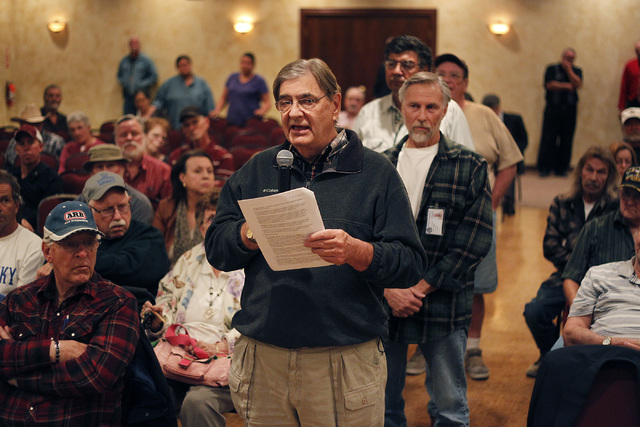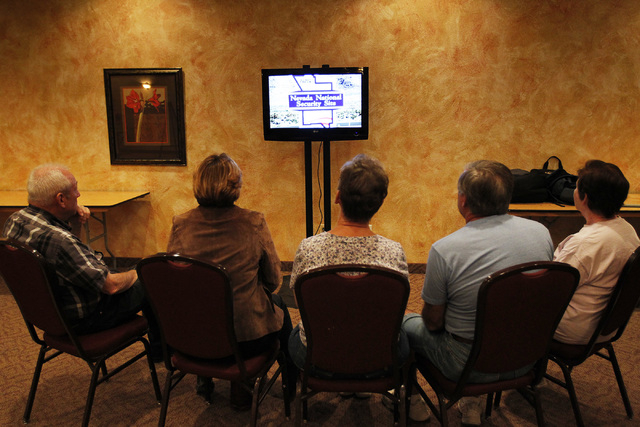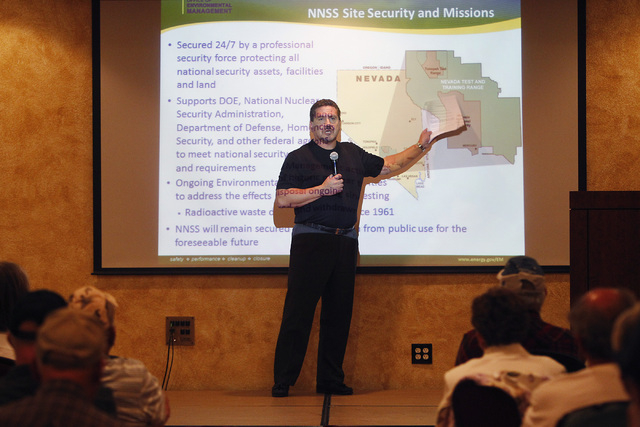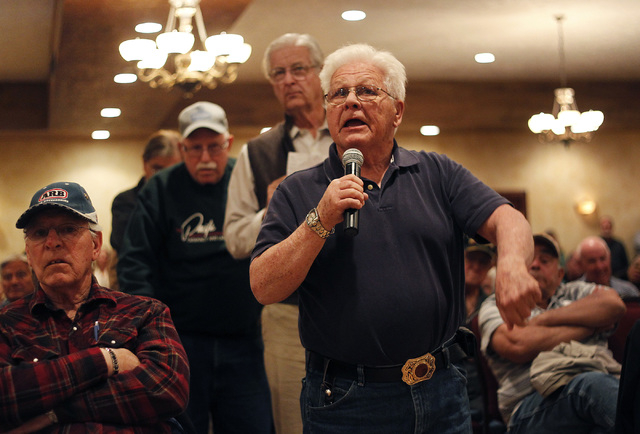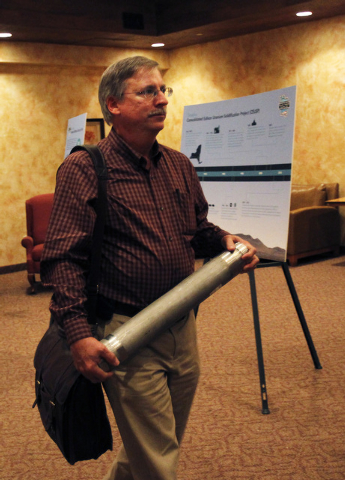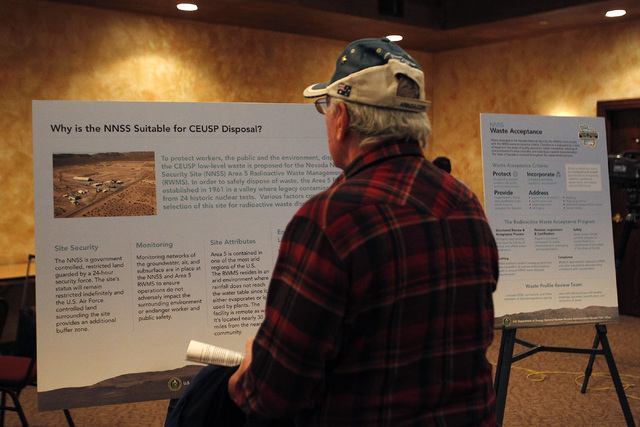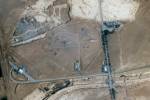Nye County residents vocal on burying nuclear waste in Nevada
PAHRUMP — A Nye County nuclear waste expert challenged federal energy officials Thursday night on why they plan to bury special uranium bomb material in a landfill at the Nevada National Security Site when the ton of waste at a Tennessee national laboratory is too radioactive to be low level.
“While it is true low-level waste is defined by what it is not, there are a few points that bear noting,” Michael Voegele, Nye County consultant and former chief scientist for the Yucca Mountain nuclear waste project, wrote in questions.
He voiced his concerns at the second of two meetings the Department of Energy held to discuss its plan for hauling 403 canisters of potent uranium waste for burial at the Nevada site beginning as early as January.
Voegele noted that the waste classification system leaves open questions about how it should be analyzed for safety.
“You’re dealing with double negatives that leaves things open for interpretation. There’s an issue that this waste is not regulated by the Nuclear Regulatory Commission,” he said prior to the meeting.
In his opinion the waste is mostly enriched uranium that is similar to spent nuclear fuel that requires disposal in a geologic repository like the one that had been planned for Yucca Mountain, 100 miles northwest of Las Vegas. The Obama administration abandoned the project and tasked a blue ribbon panel with finding a better course for dealing with disposal of spent nuclear fuel and high-level defense waste.
Voegele said he believes the waste at the Oak Ridge National Laboratory in Tennessee can be safely disposed in Area 5 of the former Nevada Test Site, 65 miles northwest of Las Vegas, but it needs more study.
During public comments Voegele told Energy Department officials he thought they were “on the right track” but they need to focus more on the safety of the material and consider how it came to be regulated as low-level waste.
Enriched uranium, “at least once upon a time, was not thought to be low-level waste. …This stuff is going to be there for a long time,” he said while Frank Marcinowski, the Energy Department’s deputy assistant for environmental management, listened at the podium.
Voegele asked if the projections for containing the waste for 10,000 years had considered impacts from climate change, increased rainfall and earthquake faults in the vicinity of the landfill.
“Those faults are potential pathways to downward groundwater movement,” noted Voegele, a geoscientist. He asked if he and other scientists could independently assess the model the Energy Department used to make its prediction that the waste would be safely contained.
Scott Wade, the Energy Department’s assistant environmental manager for the Nevada field office, welcomed the offer.
“I think we want to be transparent. We would love to have his input in a model,” Wade said.
More than 120 people attended the Pahrump meeting, twice the number at the Las Vegas meeting Wednesday night.
The canisters contain a ceramic mixture of three uranium isotopes: U-233, U-235, and U-232, which includes a deadly gamma ray impurity that in the hands of terrorists could be fashioned into a “dirty bomb.” Most of the waste — 76 percent — is uranium-235, the same atom-splitting material used in some nuclear bombs tested during the Cold War at the Nevada Test Site.
The once-liquid waste from a 1960s reprocessing plant in upstate New York was solidified and baked inside steel canisters at the Oak Ridge lab, where it has been stored in a historic Manhattan Project building since the mid-1980s.
DOE officials have said a waste transportation truck has been loaded at Oak Ridge for shipment to the Nevada National Security Site. They prefer to begin hauling the first load early next year because the waste-package certification expires in January.
Delays would be costly because the truck would have to be unloaded and the package re-certified. The cost of the waste waiting to be shipped is $2.5 million per month for security, maintenance and monitoring. The DOE expects to make 50 to 100 shipments over 18 months to 3 years.



